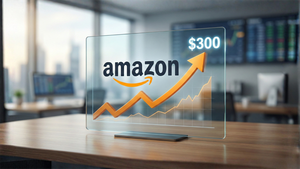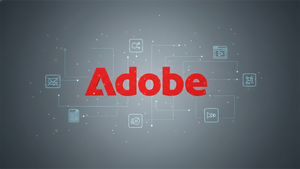
Global financial markets in 2025 are navigating a complex landscape shaped by persistently high, or "sticky," inflation and the increasingly cautious stance of major central banks regarding interest rate adjustments. Despite initial hopes for a swift return to pre-pandemic price stability, inflation, particularly in the services sector and fueled by robust wage growth and rising trade tariffs, has proven stubbornly resilient. This has created a challenging environment for policymakers, forcing them to balance the imperatives of price stability against concerns for economic growth and employment.
The divergent paths being taken by institutions like the U.S. Federal Reserve and the European Central Bank underscore the intricate nature of the current economic climate. While some central banks are contemplating rate cuts in response to weakening labor markets, others appear to have paused their easing cycles, signaling that the battle against inflation is far from over. This nuanced approach has significant implications for market sentiment, fostering a climate of heightened volatility and uncertainty as investors attempt to decipher future monetary policy trajectories and their impact on various asset classes.
The Sticky Price Puzzle: What Happened and Why it Matters
The core of the current market dynamic lies in the unexpected persistence of inflation throughout 2025. Far from being a transient phenomenon, price increases have dug in, particularly in crucial sectors. In the United States, the annual Consumer Price Index (CPI) climbed to 2.9% in August 2025, a significant uptick from earlier in the year, with core CPI, which excludes volatile food and energy, registering an even higher 3.1%. The Federal Reserve's preferred inflation gauge, the Personal Consumption Expenditures (PCE) price index, also rose to 2.9% in July. Across the Atlantic, the Eurozone saw headline inflation at 2.1% year-on-year in August, with Germany, the bloc's economic powerhouse, reporting a similar rise in its harmonized CPI.
The "stickiness" of this inflation is primarily attributed to several factors. Services inflation, encompassing areas like housing, transportation, and education, remains a key driver. This is intrinsically linked to robust wage growth, as service industries are heavily reliant on labor. Adding another layer of complexity, particularly in the US, is the impact of surging trade tariffs. The effective US tariff rate has soared to approximately 19% in September 2025, reaching levels not seen since the Great Depression. This has amplified import costs, contributing to domestic price pressures. Economists widely anticipate inflation will persist above the 2% target through 2026, with many not expecting a return to target before 2027.
The timeline of central bank responses reveals a cautious, data-dependent approach. After a period of aggressive rate hikes in 2023 and early 2024, the Federal Reserve (FED) had initiated some cuts in late 2024, but held steady through much of 2025. However, a weakening labor market, evidenced by significantly lower job creation, rising unemployment (4.3% in August), and a substantial downward revision of nearly a million nonfarm jobs created between April 2024 and March 2025, has shifted the Fed's focus. Markets now strongly anticipate the Fed will initiate a 25-basis-point interest rate cut in mid-September 2025, with further cuts possible by year-end. Conversely, the European Central Bank (ECB) cut its key rates by 25 basis points in June 2025, bringing the deposit facility rate to 2.00%, but has since maintained rates, with President Christine Lagarde signaling the disinflationary process is over and that the ECB is likely done cutting rates for now.
Key players include the Federal Reserve, led by its Chair, and the European Central Bank, headed by President Christine Lagarde, whose pronouncements are closely scrutinized by markets. Governments, through their fiscal policies and trade decisions (like tariff implementations), are also significant stakeholders, directly impacting inflation dynamics. Initial market reactions have been a mix of optimism and apprehension. Global equity markets have generally advanced on expectations of potential Fed rate cuts, while US sovereign yields have nudged down. However, currency markets have seen the Euro strengthen against the US Dollar following the ECB's hawkish pause, and overall market volatility remains elevated, driven by ongoing inflation readings, tariff updates, and labor market data. Investors are increasingly adopting a "risk-off" sentiment, favoring more defensive sectors.
Navigating the Crosscurrents: Winners and Losers in a Sticky Inflation Environment
The persistence of sticky inflation and the cautious central bank stance create a distinct landscape of winners and losers across various sectors and companies. Businesses with strong pricing power, robust balance sheets, and those less sensitive to interest rate fluctuations are likely to fare better, while those heavily reliant on consumer discretionary spending or significant borrowing could face headwinds.
Companies operating in essential services and staple consumer goods often emerge as relative winners. Their products and services are non-negotiable for consumers, allowing them to pass on rising costs without a significant drop in demand. This includes sectors like utilities, healthcare, and certain food and beverage companies. For example, large-cap pharmaceutical companies like Johnson & Johnson (NYSE: JNJ) or utility giants such as NextEra Energy (NYSE: NEE) may demonstrate resilience due to stable demand and regulated pricing structures. Companies with strong brands and customer loyalty can also leverage their pricing power to protect profit margins against input cost inflation.
On the other hand, sectors heavily reliant on discretionary consumer spending or those with high debt loads are likely to face significant challenges. Higher inflation erodes purchasing power, potentially leading consumers to cut back on non-essential items. Furthermore, if interest rates remain elevated or are cut more slowly than anticipated, the cost of borrowing for companies with substantial variable-rate debt or those needing to refinance will increase, squeezing profitability. This could impact industries such as hospitality, certain retail segments, and highly leveraged real estate developers. Technology companies (NASDAQ: QQQ) that are not yet profitable and rely on constant capital injections might also struggle as the cost of capital remains high.
Financial institutions, particularly banks (NYSE: KBE), present a more nuanced picture. While higher interest rates can boost net interest margins (the difference between what banks earn on loans and pay on deposits), persistent inflation could also lead to a slowdown in lending activity and an increase in loan defaults if the economy cools too much. Furthermore, if the yield curve inverts or flattens significantly, their profitability can be constrained. Conversely, insurance companies (NYSE: KIE) might benefit as they can often adjust premiums to account for inflation, and their investment portfolios can generate higher returns from increased interest rates. Companies with strong cash flow generation and low debt levels will also be better positioned to weather the storm, as they are less exposed to rising financing costs and have more flexibility to invest or return capital to shareholders.
Broader Implications: Reshaping Industries and Policy Frameworks
The sustained battle against sticky inflation and the central banks' measured response are not just fleeting economic events; they are fundamentally reshaping industry landscapes and prompting re-evaluations of existing policy frameworks. This scenario marks a significant pivot from the low-inflation, low-interest-rate environment that characterized much of the post-2008 era, forcing industries to adapt and policymakers to reconsider their tools and objectives.
This event fits into a broader trend of deglobalization and supply chain realignment. The reliance on just-in-time global supply chains, which proved vulnerable during the pandemic and has been further impacted by geopolitical tensions and rising trade tariffs, is being rethought. Companies are increasingly prioritizing resilience and diversification over pure cost efficiency, leading to "friend-shoring" or "near-shoring" initiatives. This strategic shift, while mitigating future supply shocks, often comes with higher production costs, contributing to persistent inflationary pressures. The increased US tariffs, for instance, are a clear example of how trade policy can directly influence domestic inflation and ripple through various industries. Manufacturers (NYSE: XLI) are having to re-evaluate sourcing strategies, potentially leading to higher input costs and ultimately higher prices for consumers.
The ripple effects extend across competitors and partners. Businesses that fail to adapt their pricing strategies or supply chains will find themselves at a disadvantage. Competitors with more agile production processes or stronger domestic supply networks may gain market share. Partnerships, particularly in logistics and raw material sourcing, are becoming more critical as companies seek to secure inputs and manage costs. The construction sector, for instance, faces challenges from elevated material costs and potentially higher financing for projects, impacting developers, contractors, and suppliers alike.
From a regulatory and policy standpoint, the sustained inflationary environment is placing immense pressure on governments and central banks. There's a renewed focus on the effectiveness of monetary policy in tackling supply-side inflation. Discussions are intensifying around whether central banks' mandates need to be broadened to address structural issues contributing to inflation, or if governments need to play a more active role through targeted fiscal policies or industrial strategies. Historically, periods of persistent inflation have often led to significant shifts in economic thought and policy. Comparisons can be drawn to the 1970s, although today's labor markets and institutional frameworks differ. The current situation highlights the limitations of demand-side monetary tools alone when confronted with supply-driven and structural inflationary forces, prompting calls for greater coordination between fiscal and monetary authorities.
What Comes Next: Navigating Uncertainty in the Economic Horizon
Looking ahead, the interplay of sticky inflation and central bank caution sets the stage for a period of continued economic uncertainty and strategic recalibration. Both short-term market movements and long-term economic trajectories will hinge on how these two powerful forces evolve.
In the short term, markets will remain highly sensitive to incoming economic data, particularly inflation reports and labor market statistics. Any significant deviation from expectations could trigger sharp reactions in equity, bond, and currency markets. Investors should brace for continued volatility, with the fourth quarter of 2025 potentially seeing increased swings as central banks finalize their year-end policy decisions. The anticipated September rate cut by the Federal Reserve will be closely watched, not just for its immediate impact, but for the accompanying forward guidance on future policy. Should inflation show signs of finally abating, or if labor market weakness deepens beyond current projections, central banks might be compelled to accelerate their easing cycles. Conversely, a re-acceleration of inflation, perhaps fueled by new supply shocks or even higher tariffs, could force a more hawkish pivot, dashing hopes for sustained rate cuts.
Long-term possibilities involve a potential re-anchoring of inflation expectations at a slightly higher level than the pre-pandemic 2% target, forcing a fundamental reassessment of investment strategies. Companies will need to implement strategic pivots, focusing on operational efficiencies, supply chain diversification, and leveraging technology to mitigate cost pressures. Investment in automation, for instance, could become even more critical to counter rising labor costs. Market opportunities may emerge in sectors that are naturally hedged against inflation, such as real estate (especially income-generating properties), commodities, and infrastructure, provided their valuations are attractive. Companies with strong balance sheets and consistent cash flows will also be better positioned to capitalize on opportunities, whether through organic growth or strategic acquisitions.
Potential scenarios range from a "soft landing" where inflation gradually subsides without a deep recession, to a more challenging "stagflationary" environment characterized by high inflation and sluggish growth. A key factor will be how effectively central banks can fine-tune their policies to thread the needle between cooling inflation and avoiding an economic downturn. Furthermore, geopolitical developments, especially those impacting energy prices and global trade flows, will continue to play a significant role in shaping economic outcomes. Businesses that proactively adapt their cost structures, secure diversified supply chains, and build pricing power will be best equipped to navigate these turbulent waters.
Conclusion: A New Era of Economic Vigilance
The persistent grip of sticky inflation and the measured, often divergent, responses from central banks mark a new era of economic vigilance for investors, businesses, and policymakers alike. The year 2025 has underscored that the easy money era is firmly in the rearview mirror, replaced by a more complex and unpredictable economic landscape where inflation remains a formidable challenge.
The key takeaway is that inflation is not merely a cyclical phenomenon but is increasingly driven by structural factors, including supply chain reconfigurations, robust wage growth in services, and protectionist trade policies like escalating tariffs. This necessitates a more nuanced approach from central banks, leading to policy paths that may not always align. While the Federal Reserve appears poised for interest rate cuts due to labor market softening, the European Central Bank has signaled a pause, highlighting the varied domestic economic realities across regions.
Moving forward, the market will remain a crucible of conflicting forces. Investors should prepare for continued volatility and exercise caution, prioritizing fundamental strength and diversification in their portfolios. Companies with strong pricing power, efficient operations, and resilient supply chains are better positioned to thrive. The emphasis must shift from simply anticipating rate cuts to understanding the underlying drivers of inflation and the long-term implications for corporate profitability and economic growth.
What investors should watch for in the coming months are not just headline inflation figures, but also their components, particularly services inflation and wage growth. Central bank communications will be paramount, as any subtle shifts in language or projections could signal significant policy changes. Additionally, developments in global trade policy and geopolitical events will continue to exert a powerful influence on commodity prices and supply chain stability. This period demands a proactive and adaptive investment strategy, recognizing that the economic environment of the mid-2020s is fundamentally different from the decade that preceded it.







